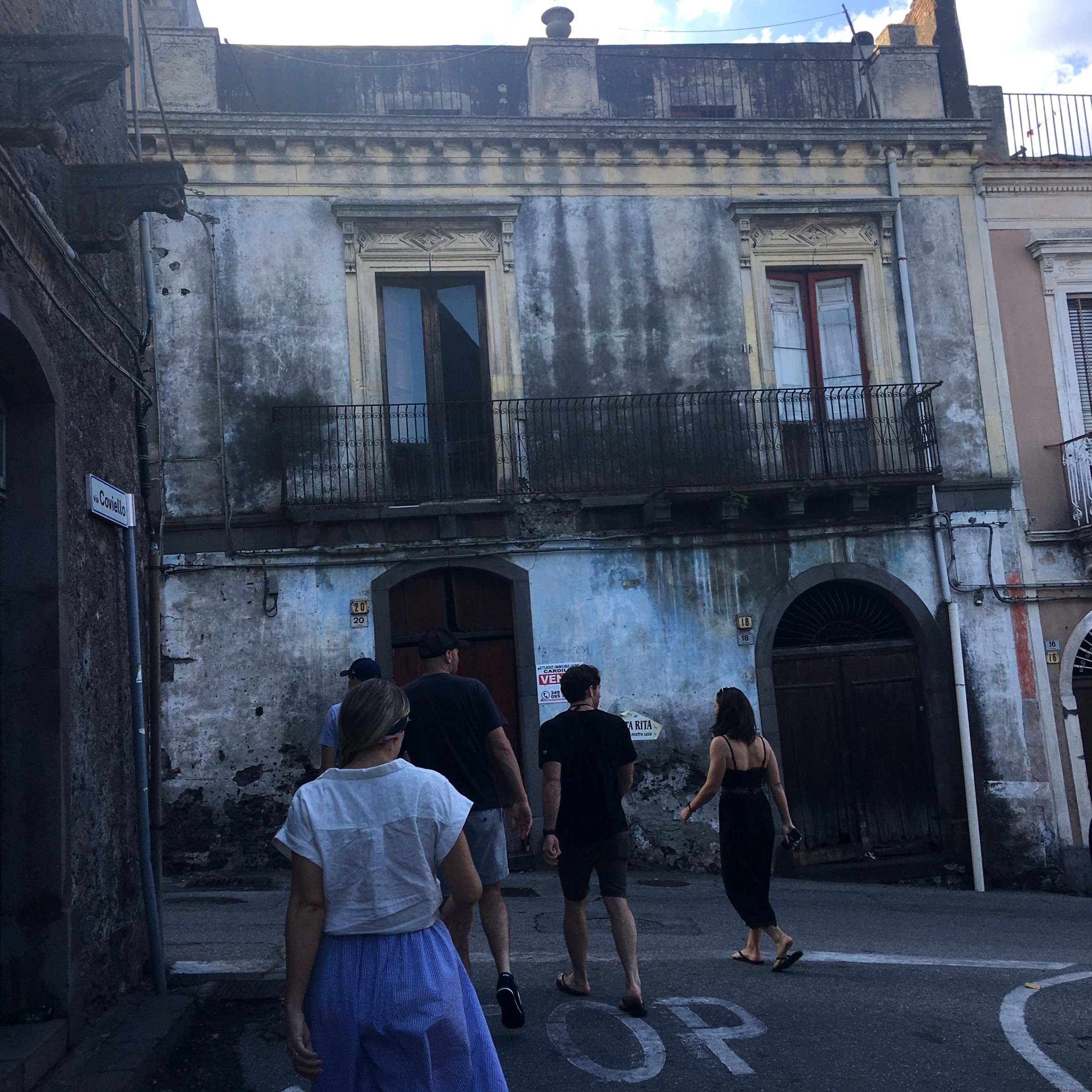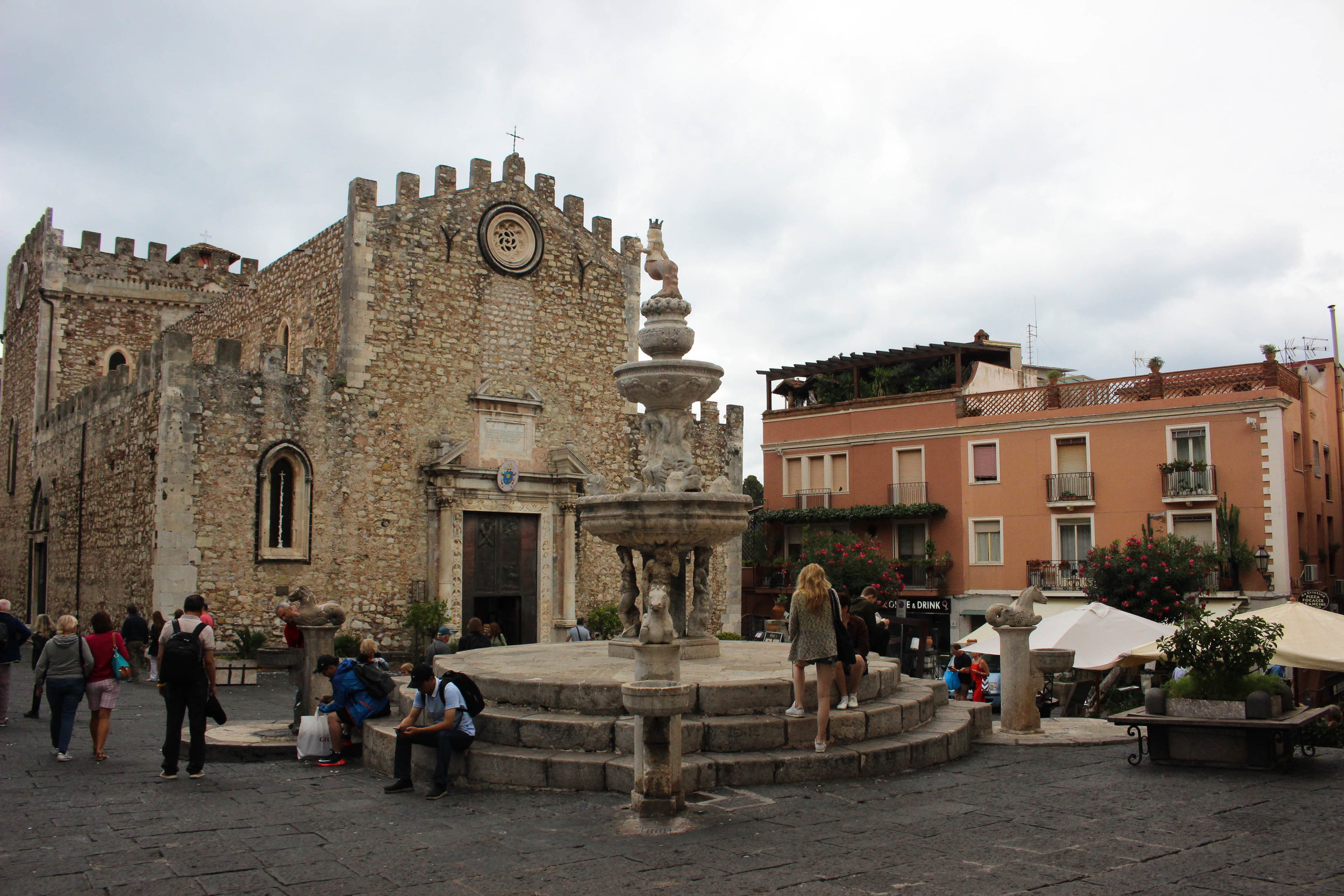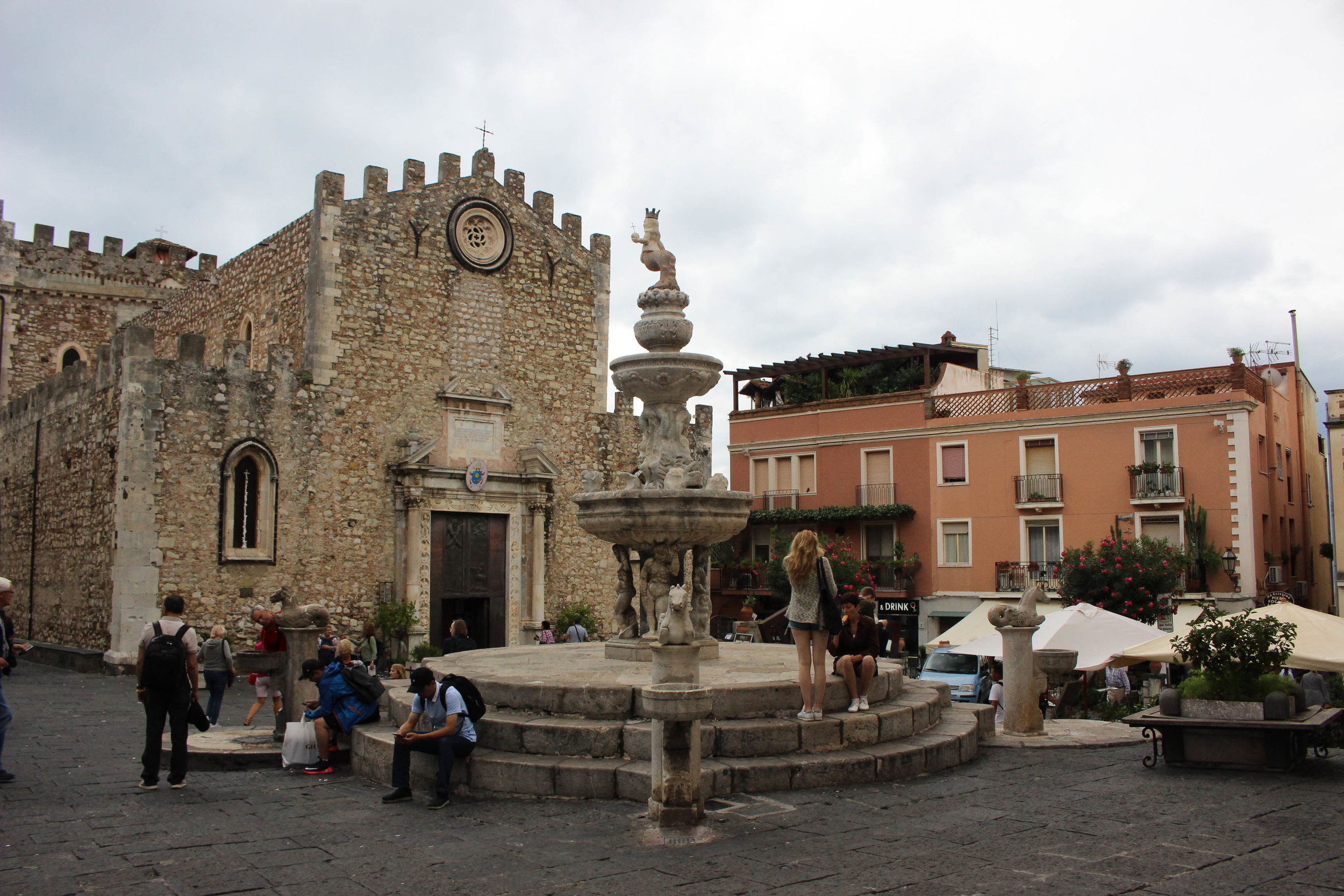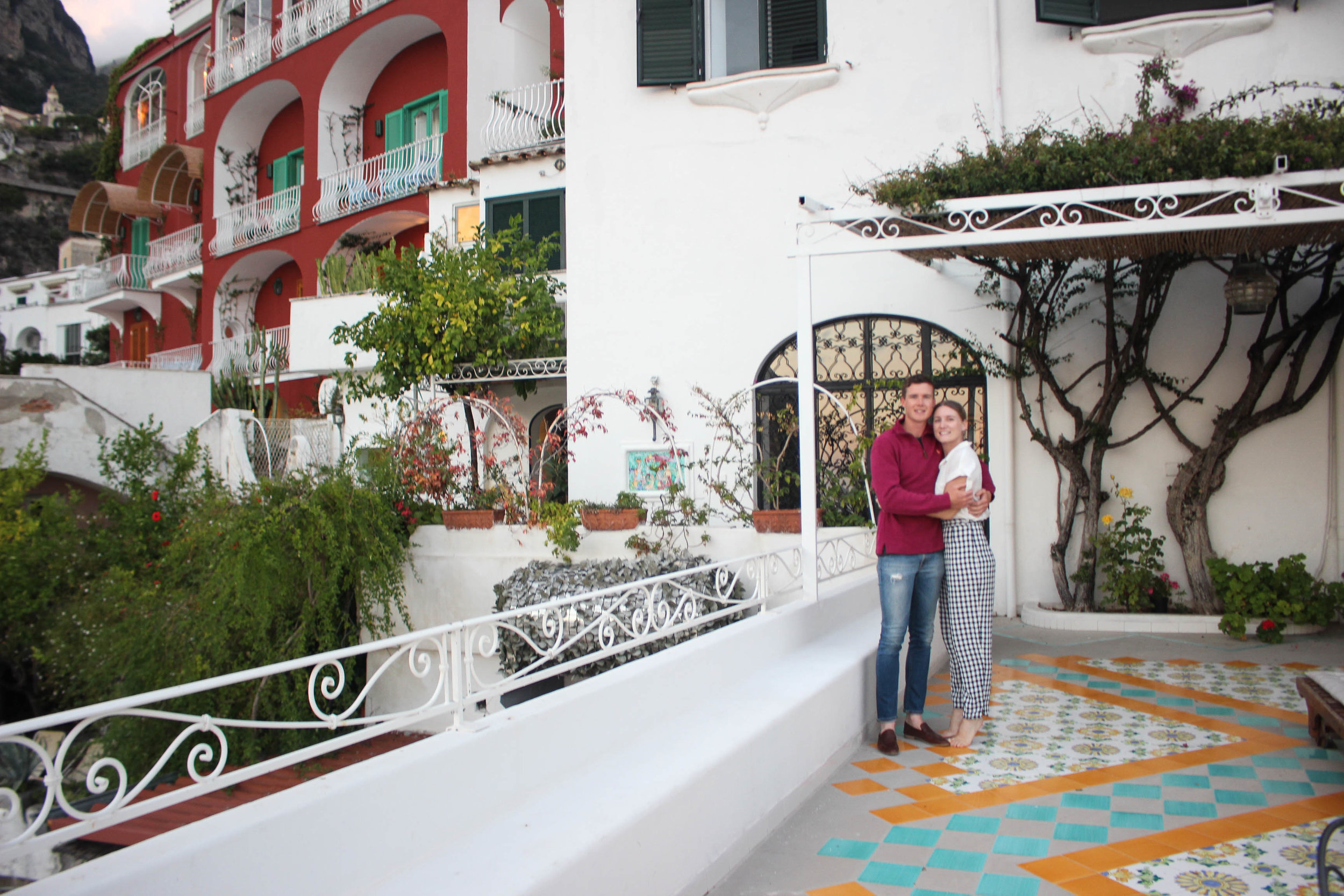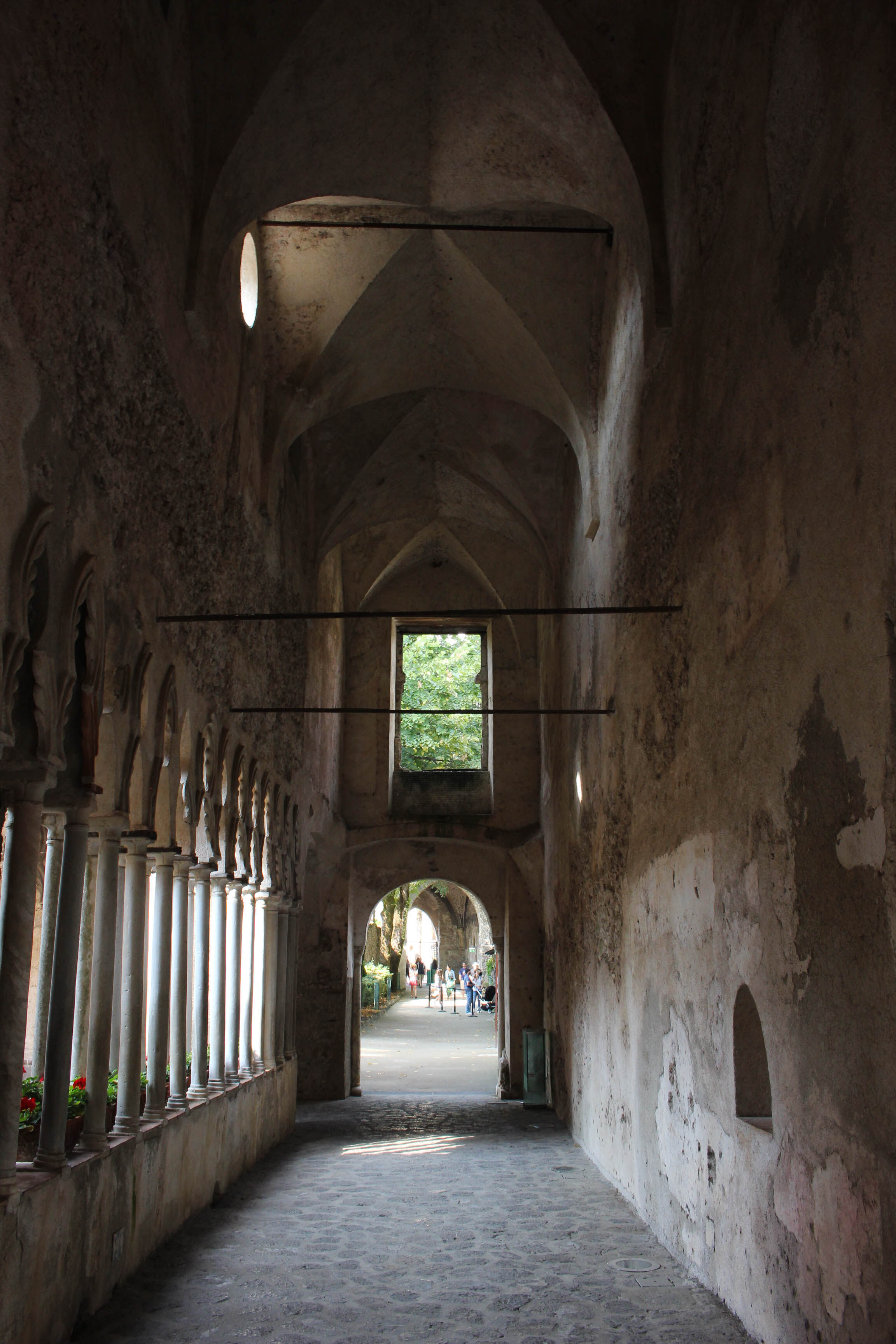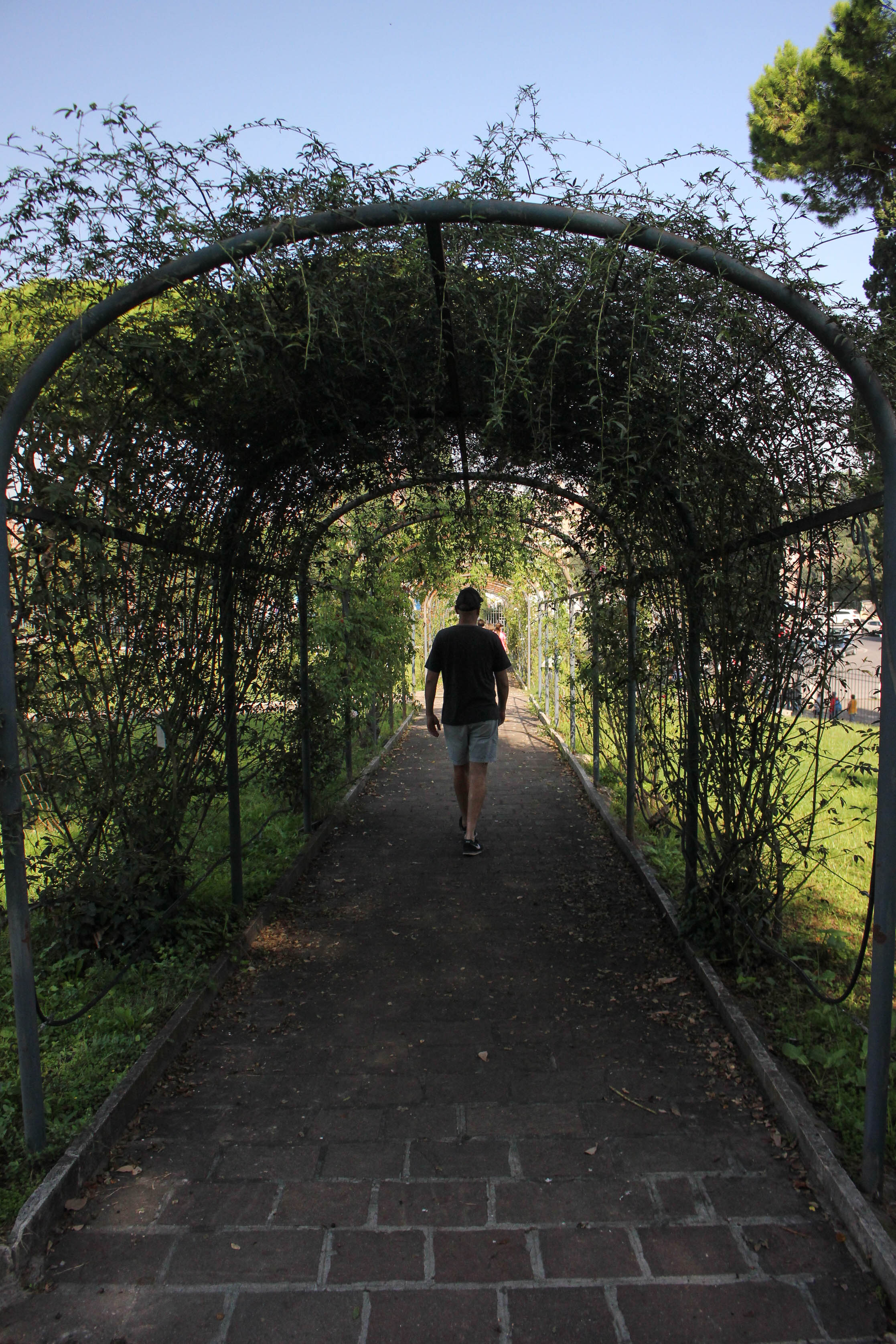I’m not sure why I do this, but after a trip I really procrastinate with editing my photos and distilling the experience into a blog post. Don’t get me wrong, I’m always very happy to share my photos and thoughts on my adventures with anyone who is willing and interested, but I think the delay might have something to do with the fact that to do this you have to create a kind of distance from this thing - which means accepting that it really is in the past. It kind of means accepting that it’s over - at the same time as reliving just how wonderful it was… It really is a very particular kind of unusual cruelty, that post trip nostalgia…
But here I am - delighting in the memories at the same time as yearning to relive them, and absolutely wishing they weren’t memories at all but ongoing and permanent delights.
This trip is particularly difficult to distance myself from. Because for many years now, when life has felt like just a little (or a lot) too much for me, I’ve dreamt of throwing it all in and moving to Europe to take up residence in some obscure town in the middle of nowhere to drink wine and take things at the slower pace that they seem to be renowned for… Ever the fantasy of someone suffering from that all-too-typical Australian middle class white person affliction - Cultural Cringe.
The thing is, I’m effectively the opposite of a homebody - more a restless soul. So much so that when we had some beautiful illustrations commissioned as a wedding present, while Marcus’ spiritual home that he wanted to immortalise on paper was his beloved family farm (and our soon-to-be-home), my equivalent was a non-descript town of my own imagining, somewhere in Europe…
This trip was an opportunity to test this speculative eventuality, with 3 and a half weeks in the south of Italy. The occasion was actually a family celebration for my Mum’s 60th - so we were an extended McPherson party for most of the trip. The last time we travelled all together was our African Safari holiday five years ago. And given we’re now all living in different towns / cities / countries, that trip did seem very long ago indeed…
Sicily
We started our adventure in very southern Sicily - a tiny little town called Sant’Alfio, nestled at the foot of Mount Etna. This tiny town is connected to other tiny towns by narrow winding roads that all seem to run back on each other as they curl around the mountain. As the crow flies nothing is far to get to, but winding roads and hilly landscapes meant a decent drive to the major towns of Catania and Taormina. It also meant our daily walk to the coffee shop in the town’s tiny piazza was more what I’d call a hike - downhill and then back uphill, with some serious inclines and cobbled stones. With such gorgeous sights to see on the trek, and some strong italian coffee waiting though, this became the best part of each day during our stay.
We stayed at a beautiful villa sitting in the hills. As gorgeous as it was, the best part about it was leaving to snake around the winding roads to adjacent towns - and especially to sample the produce and wine dell’Etna is known for. As a sadly misguided consequence of this, I hardly took any photos of Sant’Alfio, except on my phone. Oddly, this format seems to suit the little vignettes of Sicilian life we encountered every day.
When we did venture out, we found more gorgeous little streets in a delightful combination of tradition and modernity, and plenty of colour and movement. Our first trip was to Catania - the second biggest city on the island, after Palermo, a more tourist friendly city on the north coast, a fact that is apparently the cause of some tension to locals - similar, I imagine, to the Melbourne / Sydney rivalry. Catania remains the commercial centre of Sicily though, with a mix of low-fi traditions that are exactly what I imagine when I think of Sicily, and modern day economic activity (even if they do seem slightly behind the times by our standards - I’ve never seen so many tiny shops for printing in one place).
Architecturally it is spectacular - if feeling a little worn. And everything has the strange sense that it is exactly where it belongs that can only come from having been in that precise spot for a long, long time. Life in Catania seems to work in perfect unison with the buildings, streets and social spaces that house it. Things seem to happen so well at street level - a sure sign that the city came to be in an era when people were the primary design consideration, well before cars and commerce were shifted up the priority list.
Catania
The iconic fish market in the centre of town doesn’t just sell fish. We snapped up beautiful fresh produce, Italian (specifically Sicilian - as we were often told) charcuterie, cheese, and fresh and preserved fish that just looked so glossy and shiny that it almost looked too good to be true.
Castelmola and Taormina
Next on our Sicily itinerary was Taormina, and the ancient castle at Castelmola, just close by. After driving up and down the mountain many times (!!!) we finally figured out that we needed to catch the cablecar up from the coast to reach this beautiful spot. Medieval towns sure were not designed to accommodate street parking.
Castelmola is perched on the mountain top, with views across to Etna and down to the water. Though there isn’t too much left to show for the building itself these days, the views back down over the country side were spectacular and the quintessential bougainvillea bushes make it ideal for happy snaps.
Taormina is very tourist friendly - ticking all the “sicilian” boxes and walking very close to the kitsch line, but with lovely boutiques and quite special restaurants (and not just trattorias and pizzerias). The picturesque cobbled streets and buildings, the beautiful piazzas…
The waves of migration and occupation - from the Greeks, Romans, Byzantine, French - for thousands of years mean the town is comprised of layers upon layers of tradition, which is encapsulated by the ancient theatre - originally built in the Greek style, but eventually covered over to capture the Roman style. It is still in pretty incredible shape and hosts operas (we just missed the season) and performances. Unfortunately the short time we spent exploring it coincided with what was apparently the most incredible downpour of rain our guide had ever seen. Still pretty spectacular though, especially when you consider most of the rock used to build it came from the surrounding mountains in probably the third century BC.
So with the rain, our time in Taormina was almost the only less than perfect day we had all trip. As the heavens opened and the hoards of tourists readily purchased the ponchos and umbrellas on offer from opportunistic street vendors at inflated prices, we found ourselves a place to huddle undercover (beers, wines, snacks, etc - shame about the smokers). Despite the weather related hiccup, Taormina was good to us, with some beautiful scenery and exceptional food. Plus a few items from the boutiques…
When we weren’t visiting quaint little towns, we were availing ourselves of iconic sicilian wares (let’s be honest, mostly wine). We visited quite a few agrotourismo spots to sample honey, wine and other local delicacies, and I was blown away by their sense of ritual, heritage and terroir.
The most special was Benanti’s stunning winery, which housed a palmento - a pressing basin traditionally used in wine making. The thing was so cool - a whole big room / shed designed for the once very manual processes of extracting, pressing, fermenting. The setting was pretty stunning, but the best part was the food and wine, obviously.
Unexpected added bonus - Sascha used her legendary cheating tendencies (without our endorsement or cooperation) to score a bottle of prosecco! We may not have enabled it, but we were happy to share in the spoils!
While we were in Sicily we also visited a few seaside towns where we (again) found beautiful food and wine. Outside of the city we had to look a bit harder for it, but when we did track down a gem we were not disappointed.
Oddly it was here more than in the cities that the economic situation in the south of Italy felt really evident. If you’re keeping an eye on Italian politics at all (which is an absolute circus) you’ll know that many of the populist issues facing the country come from tension between the more affluent northern regions and a push for their secession from the rest of the country which is much poorer, but apparently also culturally more laid back (aka lazy, from the perspective of the northerners). The whole country is not in a good place economically really, and we definitely saw glimpses of this in Sicily, despite the beautiful buildings and masses of tradition and heritage.
The final day of our time in Sicily was also my birthday. We spent the day wandering up and down the peak of Mount Etna. And truly it is spectacular - alien and other worldly - the black volcanic soil tipped with snow.
We were reminded often (especially in the context of conversations about wine and food) how much the region owes to The Etna or dell’Etna. It feels kind of like it ominously hovers above the mortals below it, constantly active and permanently threatening to erupt at any moment. The Sicilians have cleverly figured out how to live in happy co-existence with this - appreciating the mountain for the beautiful soils and the food and wine it can produce.
The week after we left the mountain started misbehaving. Hard to believe we were wandering around up there with barely a care…
Sicily Recommendations
The best part of every day when we were in Sicily was our wander down to the piazza duomo of our tiny little town for espressos (80c) and maybe a breakfast snack (1€). Given most locals would have their espresso and get on with their day, they didn’t quite know what to make of us just sitting down to have our coffee and a chat. The Italians may have started coffee culture in Melbourne, but we’ve definitely improved on it. Although perhaps if we were quicker about it there’d be less need for a takeaway coffee… (Ok, maybe we haven’t improved on it.)
Quattro Archi in Milo - a great example of sicilian slow food. Beautiful seasonal food, abundant produce, and lots of locals as a testament to the quality of the food and the authentic surrounds.
Benanti Winery in Viagrande - a good pick if you want to see a palmento which is hundreds of years old, eat a beautiful multi-course lunch and sample a heap of stunning local wines. Benanti are certainly at the top of the list.
Glass in Riposto - we loved this hidden treasure. Amazing tapas style food, lots of specialist local wines, and a great set up.
Kisté in Taormina - the sister restaurant of the Michelin starred La Capinera which was really special for a degustation with lovely wines.
Chiara from The Thinking Traveller was exceptional - recommending some great experiences and managing bookings, times, etc for us. Well worth tapping into the local knowledge of an expert - especially if you’re keen to go a bit off the beaten track.
Amalfi Coast
Our week in Positano was actually a bit ridiculous. We stayed in the most amazing villa with the most gorgeous views you’d ever want to see. The thing we had to get the hang of pretty quickly (ie, when we arrived at 11 pm) is that to get the views you have to make the climb - in this case 100 steps up to our villa. Tricky with a massive suitcase (a lesson to pack less for every trip we ever take in the future) and especially if you take a wrong turn.... But holy hell it is impressive when you get up there.
And plus - more steps = more pasta!
Our terrace overlooked Positano’s iconic tiled duomo, with views beyond of the gorgeous houses seemingly stacked on top of each other… The perfect spot for a communal meal of salad, pasta and proscuitto. Or stacks of aperol spritz and local wine.
Positano was instantly very different to our experience in Sant’Alfio. When we toddled to the beach, we paid tourist prices for our coffee (5€) which came with an opportunity to watch all the instagram “influencers” taking their perfectly posed and styled photos. They needn’t have bothered with all the effort because it is almost impossible to take a bad photo in Positano. Those terraced houses… That colour… Those beach-side bars… That filtered light…
Our days were mostly filled with wandering the shops (plenty of linen, leather sandals, ceramics and limoncello to be had), discovering unexpectedly beautiful pockets in the winding back streets, afternoon drinks on the beach, and spectacular dinners at many of the towns restaurants. Being a tourist in a tourist town is such a funny thing. I was so conscious that the town is engineered for this kind of leisurely indulgence, but that this is not at all reflective of the lifestyle of the locals who all seem to be working busily to give us a seamless travel experience. Once again, I cursed myself for not having come better prepared with more of the local language under my belt (especially beautiful italian) - but in such a tourist friendly environment it was rare to meet someone without lovely (and endearingly accented) english.
The path of the gods
When we weren’t imbibing either coffee or alcohol, we were off adventuring along the coast. The iconic Path of the Gods was an incredible half day hike from Bomerano through the beautiful scenic terraced paddocks, dotted with vines, houses and cobbled walls. The walk was gently undulating, with pockets of green shelter giving way to expansive views of the countryside. The ocean beyond meant breathtaking views at every turn.
A vital lesson learned though - the 1000-odd step walk back downhill should not be taken at a run, or you risk some seriously sore calves for at least a week, which can be a struggle when the whole town is made of stairs built on stairs.
Capri
Capri is a beautiful little island in the Tyrrhenian Sea, just off the coast from Positano. We walked from the port up to Capri, the island’s central town which has a handful of winding streets filled with beautiful high end boutiques, expensive restaurants and gelati shops. It definitely feels more like a resort than an island. It is beautiful - picture perfect - and chockers with wealthy tourists (many of whom seemed to be American, and stopping over on a cruise).
A half day on the island of Capri was enough to reinforce why the Mediterraneans are so healthy and seemingly content despite their love affair with the pizza, pasta and bread we’re petrified of in the west - and their affection for plenty of drinking. We saw older locals hiking up the hill in the heat at a very respectable steady pace, while tourists wilted from the warmth and exertion. They greeted their neighbours politely and went about their business, navigating the tourist hoards deftly and patiently. We saw quite a few propped up appreciating the view at particular vantage points - and what a view!
The second half of our day trip to Capri was a ride around the island on a luxury boat. We visited the Blue Grotto (which was cool, but a total tourist sausage factory), swam in secret caves, looked at prehistoric rock formations, and generally behaved like toffs.
RAVELLO
The beautiful town of Ravello was our final day trip destination during our stay in Positano. Once the playground of the rich and famous, there are beautiful estates, gardens, views, and a tradition of art and music that seems kind of surprising to me - given it is a coastal town tucked away on the side of a cliff… But you forget that these guys have been doing it for thousands of years.
We wandered the grounds of Villa Rufolo, which was built in the 13th Century and refurbished far more recently. The beautiful grounds and gardens (not to mention the views back over the coast) were spectacular. It is kind of hard for Australians to get our tiny minds around how old some of these buildings are, and the fact that the engineering that created these very permanent structures was sound enough for them to endure all these years later. It really makes me think about how we conceptualise our past. When the vast majority of our history in Australia was without these kinds of permanent structures, what does it say about us that we have a hard time coming to terms with it? How do we get better at this if the way we think about heritage in the west is so strongly linked to physical, long term reminders of what came before us… That said - when the landscape is such a big factor in how you construct these permanent structures, you can’t help but consider it too… (And we haven’t even made it to Rome yet!)
AMALFI COAST RECOMMENDATIONS
Definitely worth spending a day to hike the Path of the Gods. If you’re game you can do the walk there and back (probably the best part of a day if you want to take the time to enjoy it), or take a bus or taxi to Bomerano to start the walk back from there. The walk from the bottom of the stairs back into Positano is still a little bit of a wander, so don’t do anything like silly like running down the stairs which might risk blisters and / or sore legs.
Late afternoon on the beach in Positano was just so lovely. The perfect time for a cheeky drink and a pizza at Ocean Bar.
We ate at some really lovely dinner spots in Positano. Next2, Da Vincenzo and Ristorante Max were our highlights, and as a general rule the seafood was the winner. The only place we went that we really didn’t rate was La Tagliata. Cheesy and touristy IMO, but I know many other people who have enjoyed it.
Babel wine bar and gallery in Ravello was super lovely.
Casa E Bottega - a beautiful little cafe and boutique in Positano with homewares, glassware and ceramics. I think we particularly appreciated their breakfasts after a couple of weeks away (eggs and avocado for the win).
Elisir Di Positano Cafe - It might not look like much (don’t let the resident cat throw you off) but his place sells the best calamari fritti ever. According to Andrew it is the best thing to be put in a cone since gelati.
ROME
We had some slight confusion in our scheduling which meant that rather than visiting a few other spots in Italy (including travelling north) we ended up sneaking in a 4 day visit to Paris instead. Perhaps the topic of another blog post.
We stayed in the PERFECT spot for a short visit to Rome. Just outside Trastevere and close enough that everywhere was walkable - with the most incredible views of the city at every turn. We also got SUPER lucky in that friends of friends are living in Rome and gave us an amazing list of great places to eat / drink / see organised by category and location, plus we got to hang out with them at some of their favourite local spots. We had absolutely sensational weather. Couldn’t have asked for more for our first visit (except maybe some more italian under our belts).
Mostly we wandered around Testaccio and Trastevere, with a day at The Vatican to see St Peter’s Basilica, the Sistine Chapel, etc. We ate ridiculously well, we looked at ancient things, gardens, churches… We fawned over the beautiful fresh produce, we ate gelati, we drank espresso, we drank italian beers and italian wines - we’ve got the italian thing nailed really, especially where food is concerned. I think Rome really suited us. We could settle in quite nicely here.
ROME RECOMMENDATIONS
Angelina Testaccio - gorgeous rooftop terrace restaurant. The food was sensational and they custom make cocktails to go with your order, or recommend matched wines with each course. The interiors were also beautiful, with a collection of vintage and contemporary furnishings which felt perfect for the location.
Masto - unbelievable bar for charcuterie, fresh local produce and incredible wine. The owners really care about the quality of their produce and recommend items and dishes depending on what you like. We also bought some incredible local wines here, which are from the very best in the region lists.
Tram Depot - a quirky little bar in a park. Great for a stop off for an aperitivo before dinner. Great cocktails or beers. Tables or bench seats for a casual drink. A really great mix of demographics, ages, nationalities all hanging out together in a really informal setting.
L’Oasi della Birra - amazing tiny little shop that was jam packed each time we visited. Stacks of local beers, wines, and a selection of eats. Positioned next to a great piazza, so you can buy a bottle and they’ll give you glasses to go and enjoy it sitting in the open while you people watch.
Panna & Co - the best gelati we had all visit. My favourite was fig. Mmmmmmmmm…
Testaccio Market - super lovely little market that is like a micro version of Prahran Market. Some absolutely beautiful fresh produce, but also a few little cafes and preprepared food including some incredible pizza by the slice.
Campagna Amica / Circo Massimo Market - an absolutely delightful find with incredible fresh produce - slow, organic producers - mostly selling fresh produce, but Marcus also had an amazing pork roll.
Vatican City - definitely worth a day visit, but jam packed with tourists and super slow to get around. Apparently it is quieter in the afternoons (and so is the Colosseum).
I found Rome fascinating in a completely different way than I was anticipating. It is spectacularly beautiful, but not the kind of beautiful we’re used to I think. The thing I fell in love with is the years and layers of history that are not even below the surface - they’re features, and a huge part of the city and its economy. It just seems so at odds with how things work in Australia - where we have so much scope to start from scratch and build from first principles, which has such a huge impact on daily lives of romans. Traditions mean so much more when you’re talking about thousands of years of connection to rituals and ideas. When the ways things are done were cemented decades before there was a technological solution to abbreviate the process, doing things the long way for the sake of tradition means so much more. When these things were embedded at a time when a sense of place and a connection to the land / landscape and community around you were absolutely necessary, you can’t help but have those things still in your mind when you observe these rituals. I found it really easy to conceptualise contemporary Rome as just one moment on the time continuum of what’s come before and what will come after. How can you ignore that sense with so many many years of history so physically evident with every corner you turn and every street you walk down. The idea of throwing out the old to replace it with a newer, shinier version just because it will make your life easy seems kind of mad in this context. History and comfort seem to be held in some kind of precarious balance (or tension). It’s like the perfect amount of necessary friction that brings you into contact with history, and with the others around you, and also with the processes that stop us from unnecessarily overcomplicating (or oversimplifying).
This sense of historical continuity brings so many positives: the city of Rome seems to have been conceived at human scale. Everywhere is walkable, everything is community sized - the piazzas, the cobbled streets and the small shops mean everything is well engineered so that people have a sense of living in a community - with a bunch of things in their immediate locality. They’re close to their neighbours, houses are compact, and there is plenty of civic space to be occupied - everything feels oddly communal, but in a way that still has a sense of privacy. It also feels like there’s a much greater appreciation of quality and permanence, which makes all kinds of sense.
In our visit to the Colosseum, we learned that new technology has recently led to the discovery of more ancient buildings hidden under what is the world’s oldest botanical garden. Apparently there’s a debate raging about whether digging up these gardens can be justified if it means excavating the site to uncover the built structures beneath. This feels like a perfect metaphor for Italy’s current predicament - to what extent do we hold on to what we’ve got when it has been honed from years of history and tradition. Can we let go of the way we’ve always done things to potentially uncover else, and what do we lose if we do so..?
With that in mind, we had some very interesting discussions about where Rome is at right now - which is very much linked to how Italy as a whole is faring. The issues with civic spending and local government (particularly in Rome) have been well documented, and are so clearly problematic (particularly with waste collection, which you can’t ignore). The economy is not going well - and the tension between Italy and the EU (and the EU and several other countries) is an ongoing topic of conversation. Days after we left there were mass demonstrations in Rome to protest management of the city. Given this is our first visit, it is hard to distinguish what is unusual about Rome right now, and what is just how Rome is all the time, but things certainly feel a little unsettled.
We happened upon was a huge Five Star Movement rally happening in the centre of Rome on one day of our visit. The vibe felt more like you might expect of a food festival or a sporting event in Melbourne, and it wasn’t immediately apparent that this was a political rally. There was such a mix of generations, and nothing that gave away their politics (though maybe we just didn’t recognise any telltale signs).
So fascinating, and no way we could get our heads around all of the complexity in just 3 weeks. Super interesting to have spent so much time in the south of the country as Lega Nord (the Northern League) are continuing to demonise the south and kind of normalising their version of right wing populism, anti-EU and anti-migrant policies. I couldn’t quite make sense of how people feel about the Five Star Movement and Lega Nord running the country. But I don’t know how they make sense of the last 30-40 years of politics in Italy at all…
No doubt it will take many years and many return visits to get my head around it. For now, I’ll take some seriously lovely memories with me, and try (as I do every time I return from time away) to borrow the best elements of what they do in Italy for my daily life. Nothing like a holiday to slow things down and get a little perspective…
